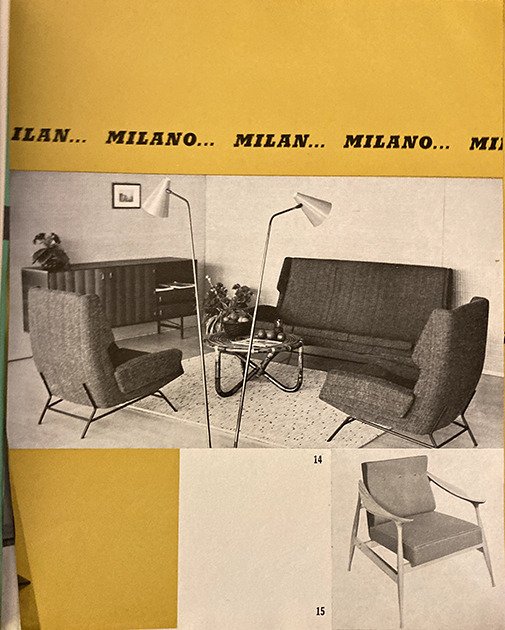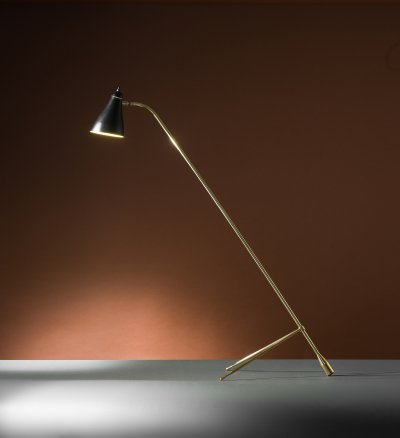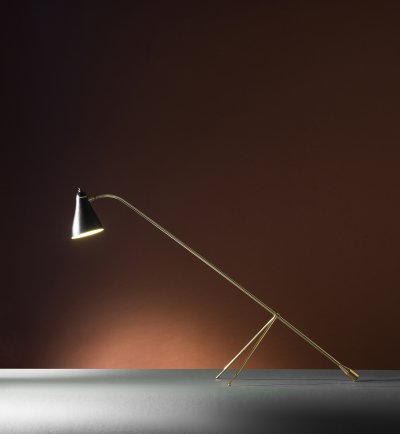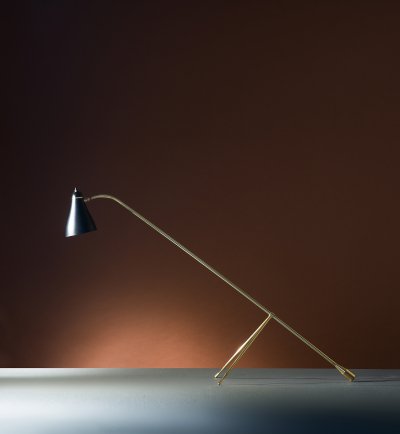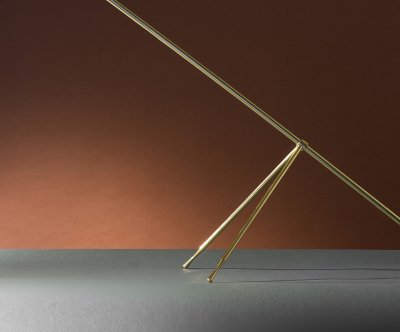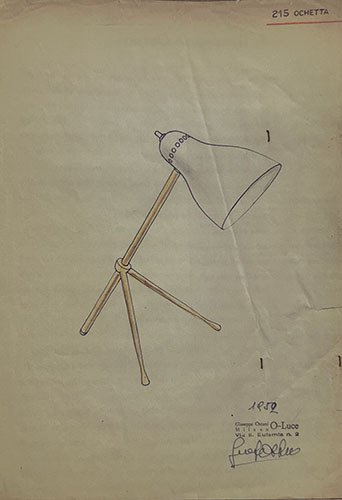Giuseppe Ostuni
Giuseppe Ostuni was born in 1907 in Trieste, then part of the Austro-Hungarian Empire. A self-taught designer, he never followed an academic path but cultivated a deep sensitivity to proportion, material, and the transformative power of light.
In 1945, amidst the rubble of postwar Milan, he founded O’Luce. More than a lighting company, it was a workshop of ideas — a place where illumination became architecture, and lamps were conceived as living sculptures.
By 1949, Ostuni designed the Ochetta, a small yet ingenious lamp that could rest on a table or be mounted on a wall. Functional yet poetic, it signaled the beginning of his explorations into modular, adjustable lighting.
Throughout the 1950s, he produced some of his most celebrated designs: the Model 301M floor lamp (1953), a study in balance and clarity, and the Model 326, combining brass, wood, and fabric with rare elegance. These works embodied his belief that light should be flexible, personal, and sculptural.
Under his direction, O’Luce became a crucible for creativity. Ostuni invited young designers who would later shape the history of Italian design — Tito Agnoli, Joe Colombo, Marco Zanuso, Bruno Gecchelin — giving them a stage to experiment and innovate. His company quickly gained international acclaim, with its creations featured in Domus and other leading design publications.
In the 1960s, Ostuni’s vision matured further. He created the G.O. lamp, a model of stripped-down elegance that remains timeless. Its reissue decades later confirmed the enduring relevance of his aesthetic: geometry distilled to its essence, softened by the warmth of brass and lacquered metal.
Giuseppe Ostuni passed away in 1994, leaving behind a legacy of more than 560 documented models — wall lights, table lamps, floor lamps, and pendants. Today, his creations are prized by collectors, often reaching five-figure sums at auction. More importantly, they continue to illuminate not only interiors but also the imagination, reminding us that design can marry utility with poetry.
In Ostuni’s hands, light was never merely functional. It was intimate, adjustable, human — a companion to daily life. His work shows us that beauty, when intertwined with purpose, casts a glow that time cannot dim.
